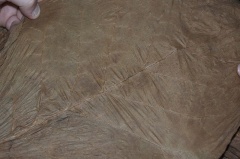Tobacco
From Cargo Handbook - the world's largest cargo transport guidelines website
| Infobox on Tobacco | |
|---|---|
| Example of Tobacco |  |
| Facts | |
| Origin | This table shows only a selection of the most important countries of origin and should not be thought of as exhaustive.
|
| Stowage factor (in m3/t) |
|
| Humidity / moisture |
Water content: |
| Oil content | - |
| Ventilation | Tobacco requires particular temperature, humidity/moisture and possibly ventilation conditions. Tobacco is generally transported in 40' or 20' standard containers. Ventilated containers are only used for transport from regions with critical climatic conditions, such as Indonesia or the Dominican Republic. If tobacco is loaded as conventional general cargo, ventilation is not normally required, provided that the water content of the tobacco corresponds to set values and there is no risk of sweat formation. If this is not the case, an air exchange rate of 6 changes/hour (airing) or just return air is advisable. Over-vigorous ventilation may dry out the tobacco and cause crumbling or fragmentation damage. For this reason, the system is switched to only vigorous return air. |
| Risk factors | Under suitable conditions, tobacco has a tendency to postfermentation and self-heating. Tobacco very readily absorbs foreign odors; is extremely sensitive to contamination, moisture damage, mechanical stresses and insect infestation. |











